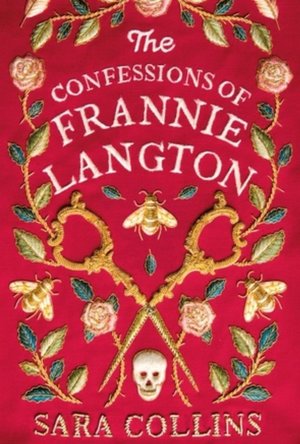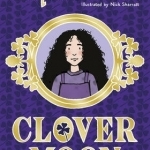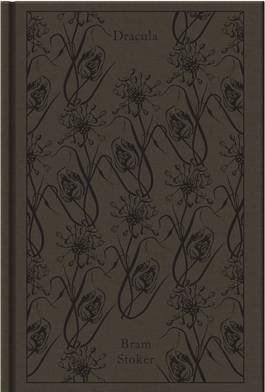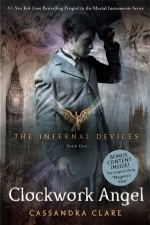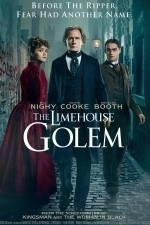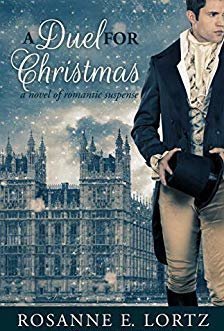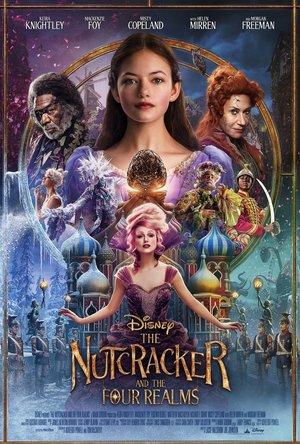Search
Zoe Nock (13 KP) rated The Confessions of Frannie Langton in Books
Jun 26, 2019
“My trial starts the way my life did: a squall of elbows and shoving and spit.”
Sometimes a book just grabs you from the beginning, something tells you that treasure lies here. I felt that within a few paragraphs of The Confessions of Frannie Langton. Sara Collins prefaced the novel with an explanation of her enjoyment of stories from Georgian/Victorian era but also her disappoint that she didn’t feel represented in the literature from that time. Her love of literature and that lack of inclusion drove her to write a novel that filled a gap, filled a need for women like Frances Langton to have a voice.
And what a voice! The author embodies Frannie so well. The first thing that struck me was that Frannie’s voice shone through immediately. She sounds so authentic, within a few lines you are engaged and intrigued. So much of the prose is beautiful and evocative, truly poetic. Sara Collins describes the people and places so deftly, you sense the weight of a sultry Jamaican plantation and the drabness of a grey London suburb. You can almost taste the boiling sugar cane and fall under the sway of the delicious, devilish ‘Black Drop’. It’s difficult to read this book without imagining a BBC period drama, it really would make a good screen adaptation. There is no doubt that Collins is a gifted and accomplished writer, a weaver of words both seductive and threatening. I really enjoyed this novel and would like to read anything new from Sara Collins.
Sometimes a book just grabs you from the beginning, something tells you that treasure lies here. I felt that within a few paragraphs of The Confessions of Frannie Langton. Sara Collins prefaced the novel with an explanation of her enjoyment of stories from Georgian/Victorian era but also her disappoint that she didn’t feel represented in the literature from that time. Her love of literature and that lack of inclusion drove her to write a novel that filled a gap, filled a need for women like Frances Langton to have a voice.
And what a voice! The author embodies Frannie so well. The first thing that struck me was that Frannie’s voice shone through immediately. She sounds so authentic, within a few lines you are engaged and intrigued. So much of the prose is beautiful and evocative, truly poetic. Sara Collins describes the people and places so deftly, you sense the weight of a sultry Jamaican plantation and the drabness of a grey London suburb. You can almost taste the boiling sugar cane and fall under the sway of the delicious, devilish ‘Black Drop’. It’s difficult to read this book without imagining a BBC period drama, it really would make a good screen adaptation. There is no doubt that Collins is a gifted and accomplished writer, a weaver of words both seductive and threatening. I really enjoyed this novel and would like to read anything new from Sara Collins.
Hazel (1853 KP) rated Clover Moon in Books
May 24, 2017
A Victorian Story
This eBook was provided by the publisher via NetGalley in exchange for an honest review
Although now in her seventies, the Nation’s favourite children’s author, Dame Jacqueline Wilson, is continuing to write after surpassing one hundred novels. Many children (mostly girls) grow up reading her stories, myself being amongst that number. Even my sister, who hated reading, purchased a number of her books. It has been well over a decade since I last read a Jacqueline Wilson, however after seeing her latest novel was available for review, I thought I would give it a go.
Clover Moon is set in poverty-stricken Victorian London, where eleven-year-old Clover, the eldest of six siblings, lives with her father and stepmother. Like many stepmother’s in children’s literature, Clover’s treats her like a slave – a position she is destined to stay in unless she gets a job in a factory. With no school to attend, Clover becomes a second mother to her younger brother’s and sisters, yet nothing can prepare her for the devastating impact a wave of Scarlet Fever brings. With only an old doll maker who cares about her, Clover is desperate to get out of her situation; so after a chance meeting with an artist who tells her about a home for destitute girls, Clover decides to seek out the help and life she deserves.
Although only eleven, Clover has the responsibilities of someone of a more mature age. It is hard to imagine sending a child out to work, or trusting them to look after a newborn baby. Children reading this book will learn the difference between their lives and the life of a child in the 1800s.
As always, Jacqueline Wilson gives her main character a happy ending – although in this instance it still remains a bit uncertain. Despite the horrible circumstances, Wilson manages to pump her story full of enthusiastic optimism, thus portraying Clover as a strong, determined heroine.
Most of Jacqueline Wilson’s earlier books were set in the present day; there were still unhappy situations, but the settings were based on ideas the reader would be familiar with. In the case of Clover Moon, unless children have been educated about the poor in Victorian England, it is unlikely that they will be able to fully comprehend Clover’s predicament. As a result, the book is more suitable for young teenagers than the usual target audience of eight to twelve year olds.
Comparing my memories of Jacqueline Wilson books I read as a child with her latest publication, Clover Moon felt like something different; a new direction. As I have not read any of her work between the early 2000s and now, I am not sure when this change occurred, but it feels as though Wilson is delving deeper into her main character’s thoughts and feelings, and creating a more insightful storyline. On the other hand, I may simply be more intuitive as an adult than I was a child.
Although Clover Moon did not turn out to be the style of writing I was expecting I thoroughly enjoyed it. In fact, this difference made it possible to distance myself from the author’s renown, and treat it as an individual story. Clover is an admirable character who, through her narration, provides both an entertaining story and brief historical education. Fans of Jacqueline Wilson will not be disappointed with this latest publication; and if you are a new reader, Clover Moon is a great place to start.
Although now in her seventies, the Nation’s favourite children’s author, Dame Jacqueline Wilson, is continuing to write after surpassing one hundred novels. Many children (mostly girls) grow up reading her stories, myself being amongst that number. Even my sister, who hated reading, purchased a number of her books. It has been well over a decade since I last read a Jacqueline Wilson, however after seeing her latest novel was available for review, I thought I would give it a go.
Clover Moon is set in poverty-stricken Victorian London, where eleven-year-old Clover, the eldest of six siblings, lives with her father and stepmother. Like many stepmother’s in children’s literature, Clover’s treats her like a slave – a position she is destined to stay in unless she gets a job in a factory. With no school to attend, Clover becomes a second mother to her younger brother’s and sisters, yet nothing can prepare her for the devastating impact a wave of Scarlet Fever brings. With only an old doll maker who cares about her, Clover is desperate to get out of her situation; so after a chance meeting with an artist who tells her about a home for destitute girls, Clover decides to seek out the help and life she deserves.
Although only eleven, Clover has the responsibilities of someone of a more mature age. It is hard to imagine sending a child out to work, or trusting them to look after a newborn baby. Children reading this book will learn the difference between their lives and the life of a child in the 1800s.
As always, Jacqueline Wilson gives her main character a happy ending – although in this instance it still remains a bit uncertain. Despite the horrible circumstances, Wilson manages to pump her story full of enthusiastic optimism, thus portraying Clover as a strong, determined heroine.
Most of Jacqueline Wilson’s earlier books were set in the present day; there were still unhappy situations, but the settings were based on ideas the reader would be familiar with. In the case of Clover Moon, unless children have been educated about the poor in Victorian England, it is unlikely that they will be able to fully comprehend Clover’s predicament. As a result, the book is more suitable for young teenagers than the usual target audience of eight to twelve year olds.
Comparing my memories of Jacqueline Wilson books I read as a child with her latest publication, Clover Moon felt like something different; a new direction. As I have not read any of her work between the early 2000s and now, I am not sure when this change occurred, but it feels as though Wilson is delving deeper into her main character’s thoughts and feelings, and creating a more insightful storyline. On the other hand, I may simply be more intuitive as an adult than I was a child.
Although Clover Moon did not turn out to be the style of writing I was expecting I thoroughly enjoyed it. In fact, this difference made it possible to distance myself from the author’s renown, and treat it as an individual story. Clover is an admirable character who, through her narration, provides both an entertaining story and brief historical education. Fans of Jacqueline Wilson will not be disappointed with this latest publication; and if you are a new reader, Clover Moon is a great place to start.
Awix (3310 KP) rated Victor Frankenstein (2015) in Movies
Feb 25, 2018 (Updated Feb 25, 2018)
I, Igor
If you're one of those people who thinks that the story of Frankenstein pays far too much attention to him actually making the monster, and not enough to the details and ups-and-downs of his relationship with Igor the hunchback, then this is the film for you (although if that's your attitude, you really don't deserve Frankenstein movies at all). Deformed circus clown becomes brilliant self-taught surgeon and anatomist, is rescued by unconventional medical student, gets put to work stitching.
James McAvoy could have been a great Frankenstein, but not with a script like this one - narration keeps banging on about how familiar we all are with this story, before going off into new and wildly eccentric territory - Igor has a romance with a trapeze artist, there are problems with steampunk zombie chimps, etc. Actual creation of famous monster only happens in last ten minutes. Film has zero feeling for historical setting (a version of Victorian London where nobody bats an eyelid if your name is Igor or Frankenstein).
All the major themes of Shelley's story are basically sidelined in favour of overwrought emotional drama. Best thing in it is possibly Andrew Scott as a detective looking to bust Dr F for interfering with zoo animals; his scenes with McAvoy are actually pretty interesting. The kind of film that seems to be afraid the audience will get bored and wander away if there isn't an outbreak of slow-mo or CGI or whatever every five minutes. How does Max Landis manage to keep selling scripts like this one? Moderately good-looking but a massive waste of potential.
James McAvoy could have been a great Frankenstein, but not with a script like this one - narration keeps banging on about how familiar we all are with this story, before going off into new and wildly eccentric territory - Igor has a romance with a trapeze artist, there are problems with steampunk zombie chimps, etc. Actual creation of famous monster only happens in last ten minutes. Film has zero feeling for historical setting (a version of Victorian London where nobody bats an eyelid if your name is Igor or Frankenstein).
All the major themes of Shelley's story are basically sidelined in favour of overwrought emotional drama. Best thing in it is possibly Andrew Scott as a detective looking to bust Dr F for interfering with zoo animals; his scenes with McAvoy are actually pretty interesting. The kind of film that seems to be afraid the audience will get bored and wander away if there isn't an outbreak of slow-mo or CGI or whatever every five minutes. How does Max Landis manage to keep selling scripts like this one? Moderately good-looking but a massive waste of potential.
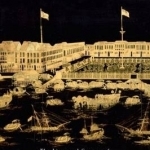
Opium and Empire: The Lives and Careers of William Jardine and James Matheson
Book
In 1832 William Jardine and James Matheson established what would become the greatest British...
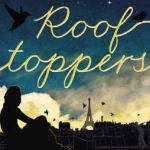
Rooftoppers
Book
This is the winner of the Blue Peter Book Award and the Waterstones Children's Book Prize, and...
The Bandersnatch (199 KP) rated Dracula in Books
Nov 7, 2019
Dracula was written by author Bram Stoker during the late 1890's and is set around the character of Dracula and his attempt to move from Transylvania to England so he can spread the curse of the undead (I.e. the creation of more vampires). English solicitor Jonathan Harker who'd originally gone to Transylvania to be legal aide for Dracula stops him with the help of Van Helsing and others which ends the life of one of them – Quincey-, the book ends with a note from Jonathan Harker that several people lived happily married and Jonathan has a son nicknamed for Quincey.
Dracula was published in London in May 1897 by Archibald Constable & Company and was later copyrighted in the U.S in 1899 and published by Doubleday & McClure of New York. Despite having decent praise form reviewers it wasn't an immediate bestseller. Although the English newspaper the Daily Mail ranked Stoker's writing prowess in Dracula above that of Mary Shelly, Edgar Allen Poe and Emily Bronte's Wuthering heights. Unfortunately it didn't make Stoker that much money and he'd had to petition for a compassionate grant from the royal literary fund. When he died his widow was forced to sell his notes and outlines of the book at an auction in 1913. It was the unauthorised adaption of Nosferatu by F. W. Murnau in 1922 and the resulting legal battle made when Stokers widow took affront that the novels popularity began to grow.
Before writing Dracula Bram Stoker had been researching European folklore and stories of vampires having been most influenced by Emily Gerard's “Transylvania Superstitions” 1885 essay...which included content about the vampire myth. Some historians insist that Vlad iii Dracula (More commonly known as Vlad the impaler) was the model for Stokers count but there's been no supporting evidence to make that true. According to one expert Stoker only borrowed the barest minimum of information of the Wallachian tyrant and he's not even mentioned in Stokers notes. Stoker was a member of the London library during the 1890's where books by Sabine Baring-Gould, Thomas Browne, AF Crosse and Charles Boner are attributed to Stokers research. Stoker would later claim he'd had a nightmare caused by over-eating crab meat about a “Vampire king” rising from his grave. Whitby on the Yorkshire coast contributed its landscape since Bram Stoker often holidayed there during the summer.
Dracula wasn't Stokers first choice as title for the story since he cycled through The Dead Un-Dead then simply the Un-Dead the count wasn't even supposed to be Count Dracula having had the name Count Wampyr for several drafts before Stoker became intrigued by the name Dracula. After reading “An account of the principles of Wallachia and Moldavia with political observations relative to them” written by author William Wilkinson (Published in 1820). the descendants of Vlad ii of Wallachia took the name Dracula or Dracul after being invested in the Order of the Dragon in 1431. In the old Romanian language the word Dracul mean “the Dragon” and Dracula meant “Son of the Dragon”. Nowadays however Dracul means “the Devil”
Whilst Dracula is known as THE Vampire novel its not the first. Johan Wolfgang Von Goethe had his book the Bride of Corinth published in 1797, 1871's Carmilla (a story about a lesbian vampire) was written by Sheridan Le Frau and James Malcolm Rymer's penny dreadful series Venny the Vampire was a product from the mid Victorian period. Even John Polidori created an image of a vampyric aristocrat in his 1819 story The Vampyre when he spent a summer with Merry Shelly (creator of Frankenstein) and her poet husband Percy Bysshe Shelly and Lord Bryon in 1816.
I really love Dracula. It showed the madness, the ethereal quality and the ultimate danger of what a vampire could do. Like many other goth inclined teenagers trying to find their feet in the world Dracula definitely added its two cents to my self worth and love of all things macabre. The fact it was written by a Victorian writer has added a unusual depth to the story as only a Victorian writer could. The culture of the Vampire has become deep rooted and wide spread in its acceptance and Dracula has definitely spearheaded such a phenomenon.
Abraham “Bram” Stoker was Born in Dublin, Ireland on the 8th of November 1847, He was the third of seven children born to Abraham and Charlotte Stoker and was bedridden with an unknown illness until he recovered at seven. He started schooling at a private school run by the Reverend William Woods and grew up without serious illness. Stoker excelled at sports at Trinity College Dublin having graduated in 1870 with a BA (Bachelor of Arts). He was an Auditor of the College Historical Society and the president of the University Philosophical Society where his first paper was on Sensationalism in fiction and society.
Thanks to his friend Dr. Maunsell, Stoker became interested in the theatre as a student and whilst working for the Irish civil service he became a theatre critic for the Dublin evening mail where he attracted notice for the quality of his reviews. Stoker gave a favourable review of Henry Irving's adaption of Hamlet in December 1876, this prompted Irving to invite him to dinner where they ended up becoming friends. Stoker wrote The Crystal Cup which was published by the London society in 1872 and The chain of Destiny which was released in four parts in the Shamrock. Stoker also wrote the non-fiction book the duties of clerks of petty sessions in Ireland which was published in 1879.
Bram stoker married Florence Balcombe the daughter of a lieutenent-colonel in 1978 and they moved to London. Where Stoker ended up the Business manager of the Lyceum theatre as well as manager for Henry Irving- a position he held for 27 years. Despite being a very busy man Stoker ended up writing several novels (as well as Dracula) Including The Snakes pass in 1890, the lady of the shroud in 1909 and the lair of the white worm in 1911. when Henry Irving died in 1906 he published his personal reminiscences of Henry Irving. Stoker also managed productions at the Prince of Wales theatre.
Bram stoker died after a series of strokes in London on April 20th 1912, the cause of death is split between the possibility of Tertiary Syphilis or overwork. He was cremated and was placed in a display urn at Golders Green Crematorium in North London, he was later joined by the ashes of his Son Irving Noel Stoker in 1961, his wife Florence was meant to join them but her ashes were scattered at the Gardens of rest.
Stoker was honoured with a Google Doogle (the banner on goggles homepage) on November 8th 2012 commemorating the 165th anniversary of his birth. An annual festival in honour of Bram Stoker happens in Dublin, its supported by the Bram stoker estate and was/is usually funded by Dublin City Council and Failte Ireland.
My opinion of Bran stoker is that of a decent hard working man who loved life. Stoker epitomises the phrases of “a man on a mission” and “a man who hussles”. Having worked extremely hard both creatively as a novelist and business wise as a theatre manager Stoker pretty much showed that if you work hard you could pretty much do anything you set your mind to.
And there you have it a book for all the ages, definitely under the banner of AWESOME!!!.
Dracula was published in London in May 1897 by Archibald Constable & Company and was later copyrighted in the U.S in 1899 and published by Doubleday & McClure of New York. Despite having decent praise form reviewers it wasn't an immediate bestseller. Although the English newspaper the Daily Mail ranked Stoker's writing prowess in Dracula above that of Mary Shelly, Edgar Allen Poe and Emily Bronte's Wuthering heights. Unfortunately it didn't make Stoker that much money and he'd had to petition for a compassionate grant from the royal literary fund. When he died his widow was forced to sell his notes and outlines of the book at an auction in 1913. It was the unauthorised adaption of Nosferatu by F. W. Murnau in 1922 and the resulting legal battle made when Stokers widow took affront that the novels popularity began to grow.
Before writing Dracula Bram Stoker had been researching European folklore and stories of vampires having been most influenced by Emily Gerard's “Transylvania Superstitions” 1885 essay...which included content about the vampire myth. Some historians insist that Vlad iii Dracula (More commonly known as Vlad the impaler) was the model for Stokers count but there's been no supporting evidence to make that true. According to one expert Stoker only borrowed the barest minimum of information of the Wallachian tyrant and he's not even mentioned in Stokers notes. Stoker was a member of the London library during the 1890's where books by Sabine Baring-Gould, Thomas Browne, AF Crosse and Charles Boner are attributed to Stokers research. Stoker would later claim he'd had a nightmare caused by over-eating crab meat about a “Vampire king” rising from his grave. Whitby on the Yorkshire coast contributed its landscape since Bram Stoker often holidayed there during the summer.
Dracula wasn't Stokers first choice as title for the story since he cycled through The Dead Un-Dead then simply the Un-Dead the count wasn't even supposed to be Count Dracula having had the name Count Wampyr for several drafts before Stoker became intrigued by the name Dracula. After reading “An account of the principles of Wallachia and Moldavia with political observations relative to them” written by author William Wilkinson (Published in 1820). the descendants of Vlad ii of Wallachia took the name Dracula or Dracul after being invested in the Order of the Dragon in 1431. In the old Romanian language the word Dracul mean “the Dragon” and Dracula meant “Son of the Dragon”. Nowadays however Dracul means “the Devil”
Whilst Dracula is known as THE Vampire novel its not the first. Johan Wolfgang Von Goethe had his book the Bride of Corinth published in 1797, 1871's Carmilla (a story about a lesbian vampire) was written by Sheridan Le Frau and James Malcolm Rymer's penny dreadful series Venny the Vampire was a product from the mid Victorian period. Even John Polidori created an image of a vampyric aristocrat in his 1819 story The Vampyre when he spent a summer with Merry Shelly (creator of Frankenstein) and her poet husband Percy Bysshe Shelly and Lord Bryon in 1816.
I really love Dracula. It showed the madness, the ethereal quality and the ultimate danger of what a vampire could do. Like many other goth inclined teenagers trying to find their feet in the world Dracula definitely added its two cents to my self worth and love of all things macabre. The fact it was written by a Victorian writer has added a unusual depth to the story as only a Victorian writer could. The culture of the Vampire has become deep rooted and wide spread in its acceptance and Dracula has definitely spearheaded such a phenomenon.
Abraham “Bram” Stoker was Born in Dublin, Ireland on the 8th of November 1847, He was the third of seven children born to Abraham and Charlotte Stoker and was bedridden with an unknown illness until he recovered at seven. He started schooling at a private school run by the Reverend William Woods and grew up without serious illness. Stoker excelled at sports at Trinity College Dublin having graduated in 1870 with a BA (Bachelor of Arts). He was an Auditor of the College Historical Society and the president of the University Philosophical Society where his first paper was on Sensationalism in fiction and society.
Thanks to his friend Dr. Maunsell, Stoker became interested in the theatre as a student and whilst working for the Irish civil service he became a theatre critic for the Dublin evening mail where he attracted notice for the quality of his reviews. Stoker gave a favourable review of Henry Irving's adaption of Hamlet in December 1876, this prompted Irving to invite him to dinner where they ended up becoming friends. Stoker wrote The Crystal Cup which was published by the London society in 1872 and The chain of Destiny which was released in four parts in the Shamrock. Stoker also wrote the non-fiction book the duties of clerks of petty sessions in Ireland which was published in 1879.
Bram stoker married Florence Balcombe the daughter of a lieutenent-colonel in 1978 and they moved to London. Where Stoker ended up the Business manager of the Lyceum theatre as well as manager for Henry Irving- a position he held for 27 years. Despite being a very busy man Stoker ended up writing several novels (as well as Dracula) Including The Snakes pass in 1890, the lady of the shroud in 1909 and the lair of the white worm in 1911. when Henry Irving died in 1906 he published his personal reminiscences of Henry Irving. Stoker also managed productions at the Prince of Wales theatre.
Bram stoker died after a series of strokes in London on April 20th 1912, the cause of death is split between the possibility of Tertiary Syphilis or overwork. He was cremated and was placed in a display urn at Golders Green Crematorium in North London, he was later joined by the ashes of his Son Irving Noel Stoker in 1961, his wife Florence was meant to join them but her ashes were scattered at the Gardens of rest.
Stoker was honoured with a Google Doogle (the banner on goggles homepage) on November 8th 2012 commemorating the 165th anniversary of his birth. An annual festival in honour of Bram Stoker happens in Dublin, its supported by the Bram stoker estate and was/is usually funded by Dublin City Council and Failte Ireland.
My opinion of Bran stoker is that of a decent hard working man who loved life. Stoker epitomises the phrases of “a man on a mission” and “a man who hussles”. Having worked extremely hard both creatively as a novelist and business wise as a theatre manager Stoker pretty much showed that if you work hard you could pretty much do anything you set your mind to.
And there you have it a book for all the ages, definitely under the banner of AWESOME!!!.
Kyera (8 KP) rated Clockwork Angel in Books
Jan 31, 2018
Clockwork Angel is the first book in the Infernal Devices trilogy by Cassandra Clare. It is set in Victorian London and has an air of steampunk – although it is not explicitly that genre. There are clockwork creations and automatons, a Shadowhunter inventor that tinkers with gears and wires, but the overall setting is not one of steam powered air machines and gear-covered outfits. As a fan of the steampunk genre and aesthetic, I quite enjoyed the subtle notes of it in this series.
The clockwork automatons are intriguing, as they are made from neither Heaven nor Hell and thus the Shadowhunters have no experience dealing with them. They create a unique foe to fight against and are a greater mystery – as our heroes do not know who truly created them, or their nefarious purpose.
Each chapter is headed with an excerpt from a poem that Tessa might have found herself reading over the years. Each is not only a wonderful addition to the story but if you enjoy them, perhaps it will lead you to seek them out in their original forms. I personally do not find myself frequently reading poetry, but the first time I read this book I fell in love with the poems selected. It caused me to go in search of them and read poetry. Perhaps you too will find yourself inspired.
As with the Mortal Instruments, our main character is a female who is unfamiliar with the Shadow World at the beginning of the novel. Before long, she is completely embroiled in the world, the politics and must learn as she goes. In this novel, our heroine is given the Shadowhunter Codex to read which allows her to quickly understand the roles of the Shadowhunter and the world she didn’t even know existed. I have always liked Tessa and felt a kinship to her, as we are very similar.
Tessa is quite tall, especially for a woman in the Victorian era, brunette and loves books more than anything else (other than perhaps her family.) Her Aunt was a very learned woman, so Tessa received a decent education and fostered a love of reading. She is able to quote from books that she loves and does not discriminate between books considered high-brow and those considered for the lower class of society. Tessa is very intelligent and not afraid to voice her opinions, even though it was not widely accepted at that time for women to be sharp of tongue. She also does not like chocolate, which endeared her to me immediately as I also am one of the few people it seems who does not like chocolate.
Our two male leads are Jem and Will, who are parabatai but quite dissimilar from one another. Jem was originally from the Shanghai Institute but found himself in the London Institute when his parents were murdered by demons. He is quiet, kind, intelligent and loves Will like a brother. Will is a Herondale, with all of the charm that comes with it. He is more reckless, boasts about frequenting brothels and dens of vice, and despite his outward attempts to appear cheerful is prone to melancholy.
The Institute is filled with other Shadowhunters and servants with vastly different personalities who bring a lot of interesting storylines with them. Charlotte and Henry are the heads of the Institute, despite their young age. Henry is a brilliant inventor, although a bit scatterbrained. Jessamine was forced to live in the Institute after the death of her parents, but she has never desired to be a Shadowhunter.
The first book introduces us to the Shadow World of London, as Tessa is invited to travel from New York to London to live with her brother. Her plans do not turn out as she had expected and it leads her on an adventure with the Nephilim. It is fascinating to see how different the Shadowhunters of this era are, and yet utterly the same. It was also interesting to see how the Shadowhunters view the Downworld. While it was not entirely equal to the time of the Mortal Instruments series, you realize that is has improved in the century since the Infernal Devices and must be leagues above the treatment in the earliest years of the Nephilim.
Whether Clockwork Angel is your first foray into the Shadow World, or not, it is a highly entertaining and well-written novel that I could not recommend more. Many people feel that this series is the best of the three, so if you’ve been considering reading any of the Shadowhunter Chronicles but were not quite sure – perhaps this is a good place to start. I personally would recommend reading a number of the Mortal Instruments before beginning this series, but that is just my opinion. Either way, if you have not yet read this book – please go do so now! It is one of my favourites and I hope that it will be yours as well.
The clockwork automatons are intriguing, as they are made from neither Heaven nor Hell and thus the Shadowhunters have no experience dealing with them. They create a unique foe to fight against and are a greater mystery – as our heroes do not know who truly created them, or their nefarious purpose.
Each chapter is headed with an excerpt from a poem that Tessa might have found herself reading over the years. Each is not only a wonderful addition to the story but if you enjoy them, perhaps it will lead you to seek them out in their original forms. I personally do not find myself frequently reading poetry, but the first time I read this book I fell in love with the poems selected. It caused me to go in search of them and read poetry. Perhaps you too will find yourself inspired.
As with the Mortal Instruments, our main character is a female who is unfamiliar with the Shadow World at the beginning of the novel. Before long, she is completely embroiled in the world, the politics and must learn as she goes. In this novel, our heroine is given the Shadowhunter Codex to read which allows her to quickly understand the roles of the Shadowhunter and the world she didn’t even know existed. I have always liked Tessa and felt a kinship to her, as we are very similar.
Tessa is quite tall, especially for a woman in the Victorian era, brunette and loves books more than anything else (other than perhaps her family.) Her Aunt was a very learned woman, so Tessa received a decent education and fostered a love of reading. She is able to quote from books that she loves and does not discriminate between books considered high-brow and those considered for the lower class of society. Tessa is very intelligent and not afraid to voice her opinions, even though it was not widely accepted at that time for women to be sharp of tongue. She also does not like chocolate, which endeared her to me immediately as I also am one of the few people it seems who does not like chocolate.
Our two male leads are Jem and Will, who are parabatai but quite dissimilar from one another. Jem was originally from the Shanghai Institute but found himself in the London Institute when his parents were murdered by demons. He is quiet, kind, intelligent and loves Will like a brother. Will is a Herondale, with all of the charm that comes with it. He is more reckless, boasts about frequenting brothels and dens of vice, and despite his outward attempts to appear cheerful is prone to melancholy.
The Institute is filled with other Shadowhunters and servants with vastly different personalities who bring a lot of interesting storylines with them. Charlotte and Henry are the heads of the Institute, despite their young age. Henry is a brilliant inventor, although a bit scatterbrained. Jessamine was forced to live in the Institute after the death of her parents, but she has never desired to be a Shadowhunter.
The first book introduces us to the Shadow World of London, as Tessa is invited to travel from New York to London to live with her brother. Her plans do not turn out as she had expected and it leads her on an adventure with the Nephilim. It is fascinating to see how different the Shadowhunters of this era are, and yet utterly the same. It was also interesting to see how the Shadowhunters view the Downworld. While it was not entirely equal to the time of the Mortal Instruments series, you realize that is has improved in the century since the Infernal Devices and must be leagues above the treatment in the earliest years of the Nephilim.
Whether Clockwork Angel is your first foray into the Shadow World, or not, it is a highly entertaining and well-written novel that I could not recommend more. Many people feel that this series is the best of the three, so if you’ve been considering reading any of the Shadowhunter Chronicles but were not quite sure – perhaps this is a good place to start. I personally would recommend reading a number of the Mortal Instruments before beginning this series, but that is just my opinion. Either way, if you have not yet read this book – please go do so now! It is one of my favourites and I hope that it will be yours as well.
Emma @ The Movies (1786 KP) rated The Limehouse Golem (2016) in Movies
Sep 25, 2019
The community of Limehouse in Victorian London have been rocked by a series of murders. They have called the mudered the Golem, as only such a creature could have done these heinous acts.
Elizabeth Cree, the music hall star, has been arrested for the poisoning of her husband John Cree on the same night as the last Golem murder. But when evidence is found by Inspector John Kildare that links John Cree to the murders, he sets about trying to solve both cases so that he might save Elizabeth from hanging for her crime.
Their investigation leads them to an exclusive reading room at the library, and a book on the art of murder. Within its pages are hand written notes chronicling the Golem murders to date. Only four men entered the reading room when the last entry was made; Dan Leno, Karl Marx, George Gissing and John Cree. Can the inspector eliminate the other three men and prove Cree is the Golem in order to save Elizabeth?
I was looking forward to this one. Some top actors were involved, and I love a bit of Victorian era murder. The film itself was good throughout, I can't fault it for the scenery and acting.
But...
Those of you that know me, know that I don't think about films. I'm sure I keep saying this. I watch them to have some fun, to escape reality, so what's the point in picking apart something that's made as a fiction to entertain you?
Even with me suspending my brain function for the duration of the film, I paused and thought... oh, this is what's going to happen... and it did. It felt a bit cliche, like the twist had been overused in every film like this that I'd seen. I don't think it was designed that way though. There was a clear moment in the film where they want you to know what is happening, but the realisation of the ending cam much earlier than this. And it was disappointing. I was enjoying the film a lot until I realised what was coming. Talking to my movie buddy I discovered that I wasn't the only one who had this feeling. It's such a shame, but the twist felt so obvious to me that I was suddenly very disappointed.
I have taken to looking at Rotten Tomatoes after seeing a film, and this one is currently sitting at 77% with critics and 61% with the audience. I'd say that's about right. I've left the major spoiler out of here, but if you're familiar with this sort of story then I don't think you'd be hard pressed to work it out. It is an excellent film in it's genre, but it was let down, for me, by the obvious direction it went in.
Elizabeth Cree, the music hall star, has been arrested for the poisoning of her husband John Cree on the same night as the last Golem murder. But when evidence is found by Inspector John Kildare that links John Cree to the murders, he sets about trying to solve both cases so that he might save Elizabeth from hanging for her crime.
Their investigation leads them to an exclusive reading room at the library, and a book on the art of murder. Within its pages are hand written notes chronicling the Golem murders to date. Only four men entered the reading room when the last entry was made; Dan Leno, Karl Marx, George Gissing and John Cree. Can the inspector eliminate the other three men and prove Cree is the Golem in order to save Elizabeth?
I was looking forward to this one. Some top actors were involved, and I love a bit of Victorian era murder. The film itself was good throughout, I can't fault it for the scenery and acting.
But...
Those of you that know me, know that I don't think about films. I'm sure I keep saying this. I watch them to have some fun, to escape reality, so what's the point in picking apart something that's made as a fiction to entertain you?
Even with me suspending my brain function for the duration of the film, I paused and thought... oh, this is what's going to happen... and it did. It felt a bit cliche, like the twist had been overused in every film like this that I'd seen. I don't think it was designed that way though. There was a clear moment in the film where they want you to know what is happening, but the realisation of the ending cam much earlier than this. And it was disappointing. I was enjoying the film a lot until I realised what was coming. Talking to my movie buddy I discovered that I wasn't the only one who had this feeling. It's such a shame, but the twist felt so obvious to me that I was suddenly very disappointed.
I have taken to looking at Rotten Tomatoes after seeing a film, and this one is currently sitting at 77% with critics and 61% with the audience. I'd say that's about right. I've left the major spoiler out of here, but if you're familiar with this sort of story then I don't think you'd be hard pressed to work it out. It is an excellent film in it's genre, but it was let down, for me, by the obvious direction it went in.
MaryAnn (14 KP) rated A Duel for Christmas (Pevensey Mysteries, #3) in Books
Mar 5, 2019
After seven long years in Devon, Lady Maud Worlington returns to London to reclaim life on her own terms, but a nefarious shadow and the prospect of financial ruin dog her steps. An impulsive and unforgettable kiss under the mistletoe creates a connection with Geoffrey, the handsome, young Duke of Tilbury. Yet as pleasant as it is to have a suitor, Maud is not sure how a boy of one-and-twenty can prove an equal partner in life and the equal of all the forces mounted against her.
The Duke of Tilbury considers himself as adept at managing matters as he is at swordplay, but his beautiful new acquaintance Lady Worlington has other ideas about how to manage her complicated life. Intrigued by their stolen kiss, Geoffrey pursues Lady Worlington’s affections, only to be foiled by the lady’s own doubts, by rivals for her hand, and by a sudden death, that affects both their families. When Jacob Pevensey, the investigator from Bow Street enters the scene, the duke becomes a prime suspect in the murder case. Truths are unearthed that Geoffrey would rather keep hidden, and the twelve days of Christmas race toward a perilous end.
My Thoughts: A story full of mystery, suspense, romance, and some charming characters. I truly enjoyed this story, based on the twelve days of Christmas, in true Victorian style. The characters were well developed and easy to relate to. Some you liked and some you dislike. It was good to see the strengthening of Maude's character, that she was finally able to stand up for herself and to go on with life without being bullied or blackmailed. This story takes many twists and turns and has many surprises for the reader. This is a book for those who like historical fiction. A wonderful read just in time for the Christmas season!
The Duke of Tilbury considers himself as adept at managing matters as he is at swordplay, but his beautiful new acquaintance Lady Worlington has other ideas about how to manage her complicated life. Intrigued by their stolen kiss, Geoffrey pursues Lady Worlington’s affections, only to be foiled by the lady’s own doubts, by rivals for her hand, and by a sudden death, that affects both their families. When Jacob Pevensey, the investigator from Bow Street enters the scene, the duke becomes a prime suspect in the murder case. Truths are unearthed that Geoffrey would rather keep hidden, and the twelve days of Christmas race toward a perilous end.
My Thoughts: A story full of mystery, suspense, romance, and some charming characters. I truly enjoyed this story, based on the twelve days of Christmas, in true Victorian style. The characters were well developed and easy to relate to. Some you liked and some you dislike. It was good to see the strengthening of Maude's character, that she was finally able to stand up for herself and to go on with life without being bullied or blackmailed. This story takes many twists and turns and has many surprises for the reader. This is a book for those who like historical fiction. A wonderful read just in time for the Christmas season!
Lee (2222 KP) rated The Nutcracker and the Four Realms (2018) in Movies
Nov 12, 2018
It's Victorian London, Christmas time, and a family mourning the recent loss of their mother is preparing to go to a Christmas party. Their father hands out some gifts left to them by their mother and eldest daughter Clara (Mackenzie Foy) receives an egg shaped box, locked and with the keys whereabouts unknown. Disappointed, they head off to the lavish Christmas party hosted by Claras godfather (Morgan Freeman) and while there, Clara discovers a hidden world consisting of four realms. War is brewing and in the absence of her mother, who discovered this world and became its queen, it's up to Clara to bring everyone together once more.
First things first, this movie is just beautiful to look at. Such attention to detail, with vibrant sets and costumes throughout. Mackenzie Foy is wonderful as Clara, dealing with grief while coming to terms with trying to live up to her mothers legacy. Keira Knightley is good, if a little annoying at times, and Helen Mirren is also reliably interesting. And Morgan Freeman is just.... Morgan Freeman!
It's all very Alice in Wonderland or The Lion The Witch and the Wardrobe. Despite their faults though, the Narnia movies always seemed to explore the vast world introduced to us, taking the time to meet many of it's inhabitants. While this movie introduces us briefly to the realms as part of a wonderful ballet sequence, only to not show any of it again for the rest of the movie. Instead, the plot all seems very contained and all over far too quickly. I liked what I saw, it just didn't really leave much of a lasting impression at all. Nor did it leave me feeling very magical or festive.
First things first, this movie is just beautiful to look at. Such attention to detail, with vibrant sets and costumes throughout. Mackenzie Foy is wonderful as Clara, dealing with grief while coming to terms with trying to live up to her mothers legacy. Keira Knightley is good, if a little annoying at times, and Helen Mirren is also reliably interesting. And Morgan Freeman is just.... Morgan Freeman!
It's all very Alice in Wonderland or The Lion The Witch and the Wardrobe. Despite their faults though, the Narnia movies always seemed to explore the vast world introduced to us, taking the time to meet many of it's inhabitants. While this movie introduces us briefly to the realms as part of a wonderful ballet sequence, only to not show any of it again for the rest of the movie. Instead, the plot all seems very contained and all over far too quickly. I liked what I saw, it just didn't really leave much of a lasting impression at all. Nor did it leave me feeling very magical or festive.
